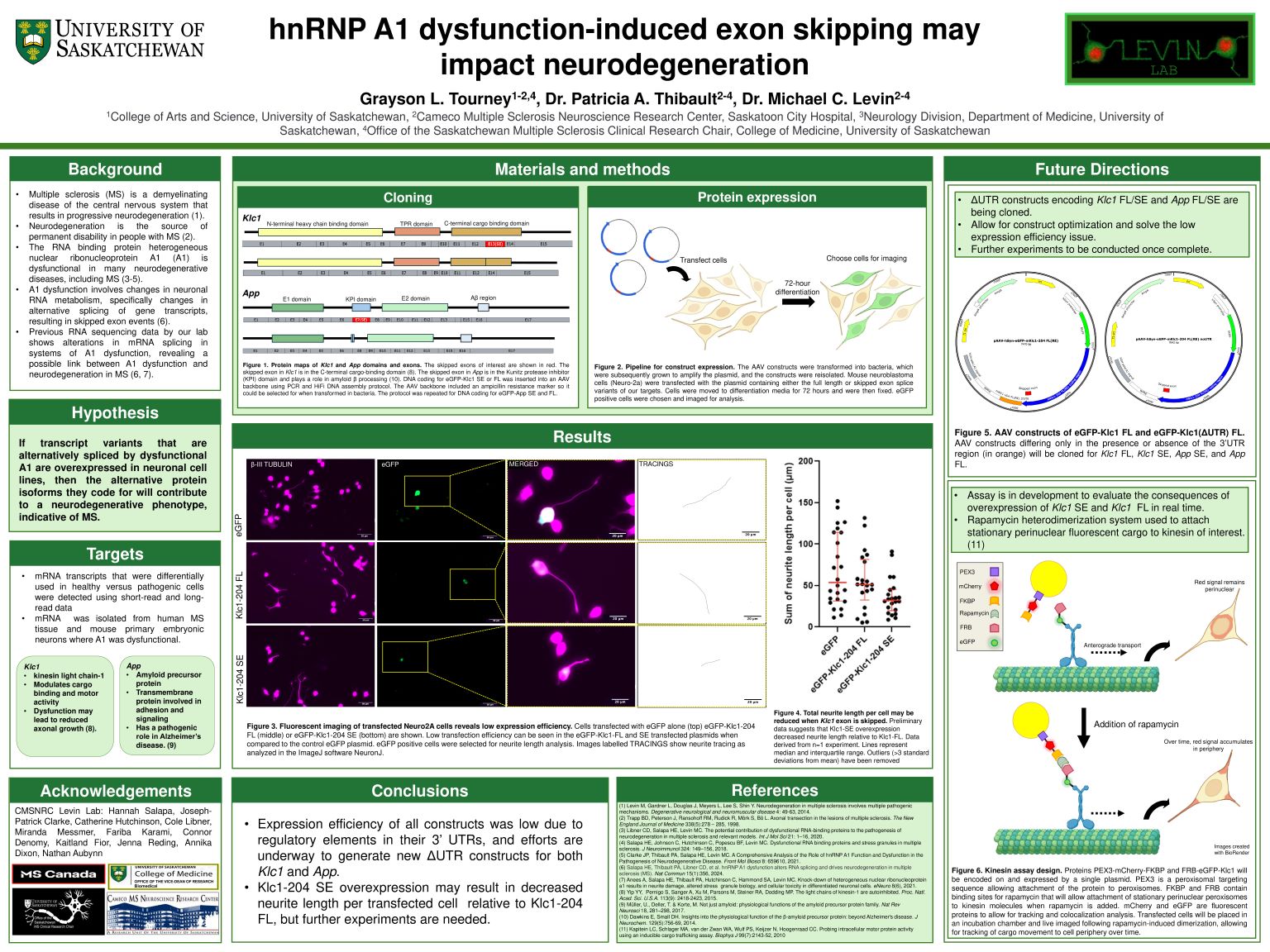
hnRNP A1 dysfunction-induced exon skipping may impact neurodegeneration
Grayson Tourney
Neuronal dysfunction of heterogeneous nuclear ribonucleoprotein A1 (A1) is associated with neurodegeneration in multiple sclerosis. A1 mediates the alternative splicing of mRNA, so we hypothesized that A1 dysfunction-mediated changes in splicing would result in transcript-level changes in neuronal targets with functional consequences. Short- and long-read sequencing of RNA from mouse primary embryonic neurons with dysfunctional A1 revealed differential transcript usage for App (encoding amyloid beta precursor protein; a change also observed in Alzheimer’s disease) and Klc1 (encoding kinesin light chain-1, involved in transport and axonal growth). Mouse neuroblastoma cells (Neuro-2a) were transfected with plasmids encoding eGFP-tagged full-length (FL) or skipped-exon (SE) isoforms of each transcript and imaged to assess neurite length changes as a measure of neurodegeneration. Preliminary data suggests that Klc1-SE overexpression decreased neurite length relative to Klc1-FL, but expression efficiency of all constructs was low due to regulatory elements in their 3’ UTRs, and efforts are underway to generate new ΔUTR constructs for both Klc1 and App. We are also developing a live-cell kinesin transport assay to evaluate the differential effects of Klc1-SE versus FL on neuronal cargo transport as a separate metric. Together these analyses will show whether A1 dysfunction-induced alternatively-spliced isoforms impact neuronal function and neurodegeneration.
